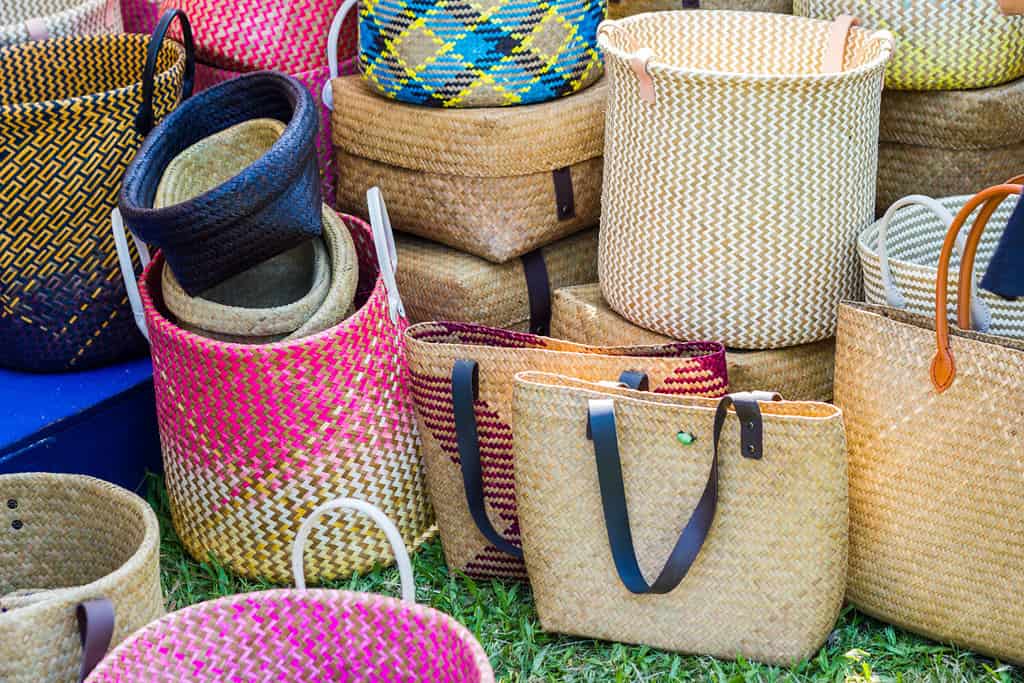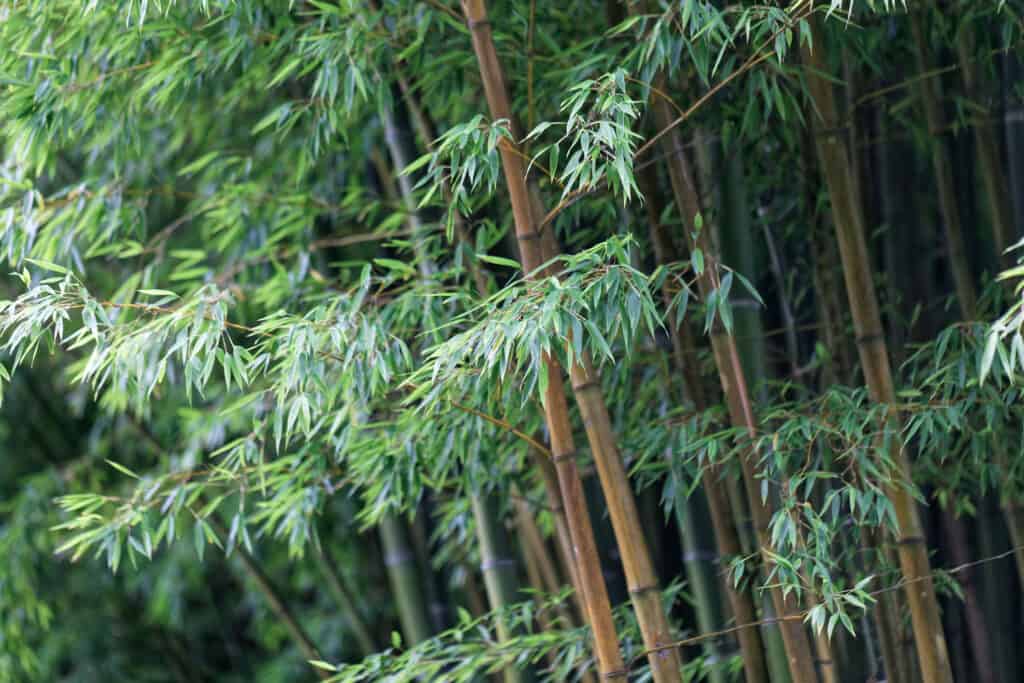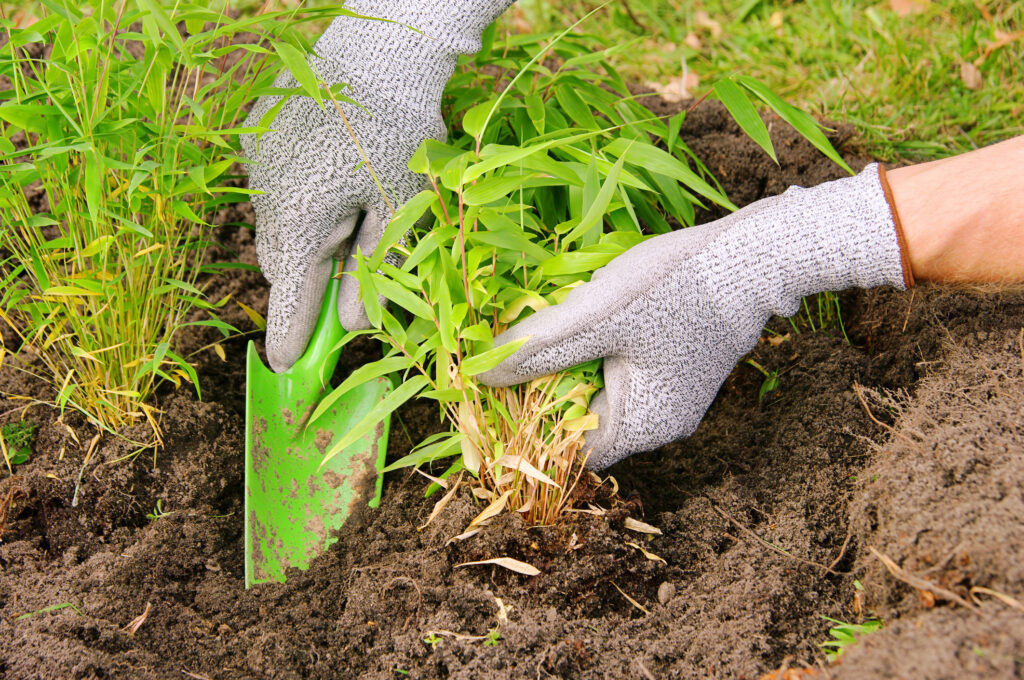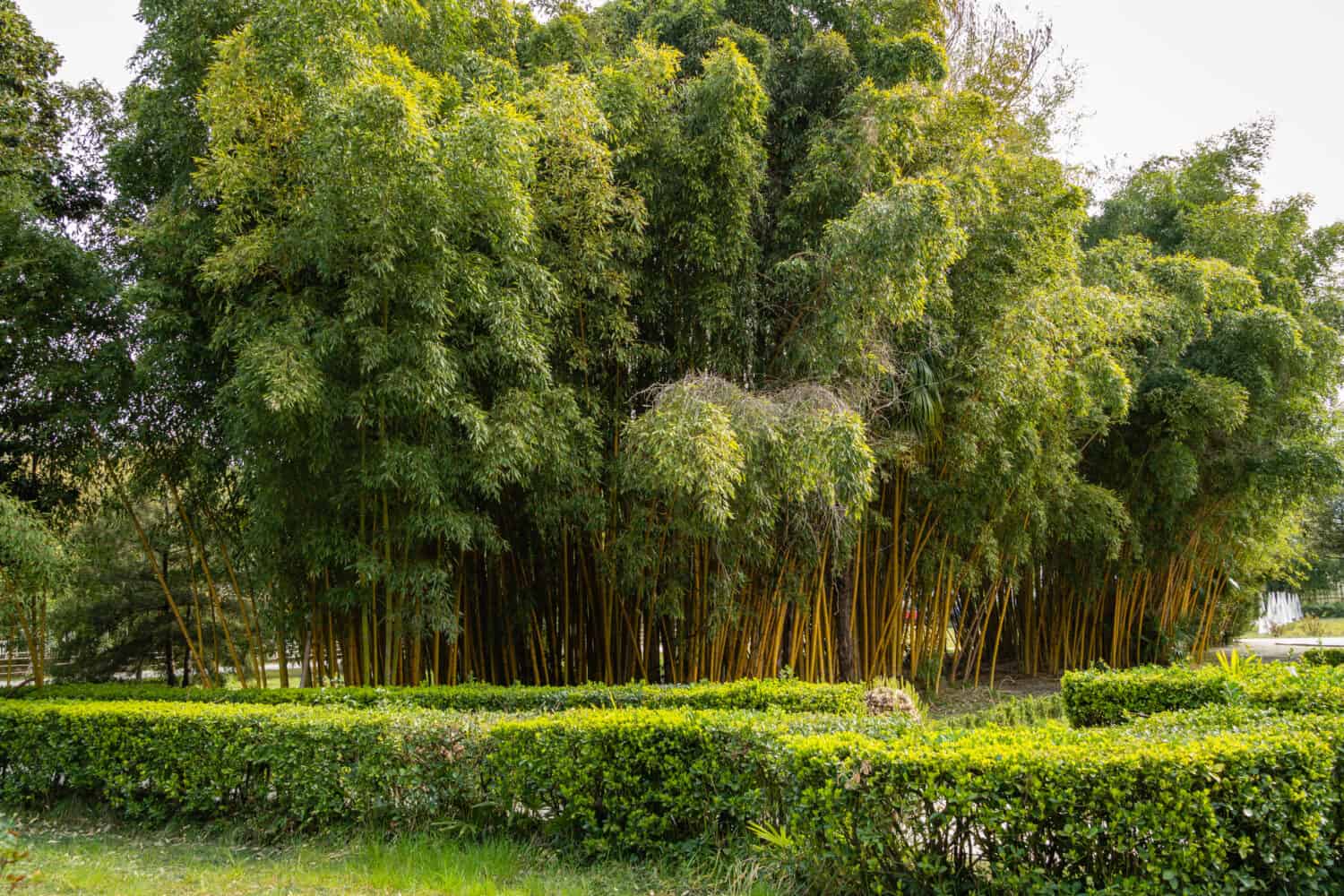Where to Find Bamboo in South Carolina
Although you would not find bamboo growing natively in South Carolina, this southern coastal state can provide a thriving climate for bamboo to grow. Bamboo has grown in South Carolina’s humid, subtropical climate for many years. Several species of bamboo can flourish in South Carolina’s welcoming climate, which has mild winters and hot and humid summers, including Phyllostachys aurea, Phyllostachys bissetii, and Phyllostachys nigra.
In South Carolina, bamboo is a popular choice among gardeners and landscapers for a variety of purposes. Dating back years, people in South Carolina have incorporated bamboo into plans for building construction, garden design, and agricultural production. Because bamboo is versatile, fast-growing, and easy to maintain, it is also a popular choice for privacy screens, windbreaks, erosion control, and aesthetically-focused landscape architecture.
This article covers the basics of what you need to know before growing bamboo in South Carolina. You will also learn the factors to consider before cultivating bamboo yourself. This article analyzes some of the biggest challenges as well as a few potential downsides to remember when growing bamboo. After that, you can learn about the benefits of cultivating bamboo and the first steps to take to start your grove. Lastly, this article includes several locations in South Carolina where you may find bamboo growing, to provide you with inspiration and access to practical advice. Let’s start now by discussing the basics of bamboo plants and covering some tips for how to grow bamboo in South Carolina.

In South Carolina, bamboo is a popular choice among gardeners and landscapers for a variety of purposes.
©iStock.com/Wirestock
What is Bamboo?
First, what is bamboo? Did you know “bamboo” actually includes more than 1,000 plants? These over 1,000, and maybe as many as 2,000, species primarily belong to the grass family, Poaceae. Most of these bamboo plants have thin and tall stalks called culms. The plants are topped by lush foliage. They are resilient, quick-growing, and low-maintenance. Yet with these similarities, the diverse number of bamboo plants come in a wide range of growth rates, sizes, colors, and uses. In South Carolina, several species grow well, including multiple in the Phyllostachys genus in particular.
One important fact for you to know before planting bamboo is whether the species you have chosen is a “running” bamboo or a “clumping” bamboo. “Clumping” bamboo grows in clumps. “Running” bamboo sends “runner” rhizomes underground. It is necessary to know the distinctions between these two because running bamboo species can spread quickly and become very difficult to eliminate from unwanted areas. This makes them like a weed – and an invasive plant that can choke out necessary, native plants. For this reason, many experts recommend that when planting bamboo outside in the U.S., landscapers choose clumping bamboo species.
Across the multiple genera that encompass bamboo species, different varieties come in a range of sizes, colors, and practical uses.

You can see bamboo in an array of products at any store.
©junpiiiiiiiiiii/Shutterstock.com
Uses for Bamboo
Throughout history, people have used bamboo plants for a wide number of practical, culinary, and cultural traditions. For example, bamboo plants are an important building material, especially in tropical regions such as its native Asia and Pacific Islands. Bamboo has been used to make tools and household goods, including fishing rods, baskets, mats, chopsticks, knife handles, hoes, and more. However, bamboo has also played a significant part in many different cultures and traditions. Since bamboo plants are hollow on the inside, they can be crafted into musical instruments such as flutes, rattles, and drums. They can also be made into hair pins or other small accessories. Additionally, bamboo fibers can be woven into textiles for clothes or other fabric goods.
Despite the many uses described above, this list is far from complete! Bamboo has numerous uses, and even into the 21st century, this plant is an important crop that is a vital renewable resource still used for many different products.
Challenges of Growing Bamboo in South Carolina
Although bamboo grows relatively easily in South Carolina’s humid, subtropical climate, there are some challenges you should be aware of before you plant bamboo. You should also remember that bamboo can be an invasive species, so should be planted with caution. In addition to this, it is important to consider the threat of droughts, soil conditions, storms, weather conditions, potential pests and diseases, and local regulations. Staying aware of these potential challenges can help you plan how to address them and help you on your journey to successfully growing bamboo in South Carolina.

Although bamboo grows relatively easily in South Carolina’s humid, subtropical climate, there are some challenges you should be aware of before you plant bamboo.
©iStock.com/weisschr
Five Challenges to Remember
First, though bamboo grows fairly easily in South Carolina, it is native to warm, tropical parts of the world. Since South Carolina can have cold winters, bamboo planted in this state may be harmed by frost damage or very cold temperatures. For this reason, you may want to choose a cold-tolerant species that will not die in the cold weather.
Second, bamboo grows best in moist, well-draining soil. These plants thrive with consistent watering. Since South Carolina can be prone to hot summers and droughts, you can help your bamboo plants survive and thrive by ensuring they have regular access to water, especially during hot and dry periods.
Third, bamboo needs soil that is not only moist with good drainage but which is also rich in organic matter. South Carolina’s soil varies across the state, but the soil can be very sandy or dense and clay-like. Clay soil in particular can be detrimental to your bamboo’s growth. To help your bamboo plants grow well, test the soil before planting, and improve the soil if necessary by adding fertilizer or correcting pH imbalances.
Fourth, bamboo, like other plants, can be damaged by pests and diseases. In South Carolina, these may include mites, aphids, root rot, or powdery mildew. You can prevent these from harming your bamboo by regularly monitoring the plants, using pest management strategies, and pruning when needed.
Fifth, some states and cities have laws governing which plants may be grown. This is particularly relevant to potentially-invasive species. Before you plant bamboo, look into South Carolina’s laws and your area’s local regulations. It is also a good idea to consult local authorities or plant experts to learn about the technicalities of growing bamboo or other plants in your region.
How to Grow Bamboo in South Carolina

Before planting bamboo, select the type you want to grow and know its soil and watering needs.
©iStock.com/LianeM
After you consider these challenges, you may still want to plant bamboo. If that is you, here are some tips to help you do so successfully.
First, choose a bamboo species that will grow well in South Carolina’s unique climate and environment. The factors to consider include those above, such as the soil, climate, and pests in the state. You may also want to think about where you plan to place your bamboo grove and what you would like to use it for.
After that, you will want to plant the bamboo in part of your land that has fertile, well-draining soil, and access to plenty of sun. Ensure the bamboo has enough water! This is especially important when the bamboo plants are still becoming established.
After that, monitor the bamboo carefully, regularly prune and thin your bamboo to remove dead or damaged culms, and check your bamboo for pests or diseases. If you want to contain the bamboo from spreading, consider using physical barriers that will keep the bamboo within a specific planting area.
Benefits of Growing Bamboo in South Carolina
If you do plant bamboo, you will find that these plants can bring plenty of benefits. These plants are fast-growing, versatile, low-maintenance, and beautiful!
Many people plant bamboo as a natural privacy screen, which can protect from the sun, wind, and noise. Bamboo groves can provide a barrier between your property and busy streets or noisy neighbors.
Bamboo can also have environmental benefits. A whole bamboo grove may become a good habitat for birds and animals. The dense, shallow roots can stabilize the soil and reduce erosion. Additionally, these plants serve to filter pollution out of the air.
Bamboo Arboretums and Gardens in South Carolina
Before you start growing bamboo in South Carolina, it may be helpful to learn from other people who are already growing these plants in your local area. Connecting with horticulturalists or plant experts can give you valuable advice, help you choose species suitable for your area, and set you up for bamboo-growing success. You may find this support from a local state university agricultural extension, Master Gardener club, or even a commercial plant nursery.
However, you can also find advice and the chance to see bamboo growing in person by visiting South Carolina’s arboretums, botanical gardens, state parks, and even museums. These places can all be great ways to learn about bamboo. Since many of these places are educational and designed to teach about the local ecosystem, you may even find bamboo-focused exhibits or special events. To help you find such places, this article will now share several options where you may visit to see bamboo in South Carolina.

The Riverbanks Botanical Garden in West Columbia displays over 5,700 species of native and non-native plant species.
Botanical Gardens and Arboretums
Brookgreen Gardens
Brookgreen Gardens, which is between Murrells Inlet and Pawleys Island, in the Myrtle Beach area, is a cultural center and opportunity to see art, nature, and history combined. Since its founding in 1931, the garden has shown visitors unique art, garden areas, plant and animal exhibits, and ecological education. The 9,127 acres of botanical gardens include special displays including old oak trees, a butterfly garden, a palmetto garden showing South Carolina’s state tree, and more. Among the plants on display are multiple different bamboo species.
Brookgreen Gardens is open from 9:30 a.m. to 5:00 p.m. every day. Tickets cost $22 for ages 13 to 64, $12 for children aged 4 to 12, and $20 for seniors aged 65 and up. Children aged 3 and under may enter for free.
Hatcher Garden and Woodland Preserve
The Hatcher Garden and Woodland Preserve in Spartanburg is a 10-acre garden and woodland preserve with many plants and natural landscapes. As a “living classroom,” the garden offers many educational events and opportunities to glean from experts while engaging all five senses. The plant displays and garden areas include a native plant garden, conifer display, butterfly garden, demonstration garden, and azalea and rhododendron garden. Among these is also a “garden of hope and healing,” a “haven of tranquility” designed to provide a peaceful escape. You can also enjoy a walking loop with the opportunity to see bamboo growing in a natural area.
The Hatcher Garden and Woodland Preserve are open from dawn to dusk every day. Entry is free of charge.
Riverbanks Botanical Garden
The Riverbanks Botanical Garden in West Columbia displays over 5,700 species of native and non-native plant species. Across 70 acres of beautiful gardens, visitors of all ages can explore beautiful native and tropical plants, architecture, and educational exhibits. The botanical garden displays include a bog garden, rose garden, shade garden, and many others. The crown jewel is a 34,000-square-foot garden which is a maze of seasonal and uniquely-themed gardens to inspire home landscaping design.
This beautiful array of landscaped gardens also offers a serene Asian Garden. Since 2009, this garden has offered visitors the chance to relax, listen to trickling water features, enjoy trees and shrubs from Asia, and take in the sights and sounds of rustling bamboo.
Visitors may purchase tickets to the Riverbanks Botanical Garden and Zoo. Admission for those aged 13 and up is $24.99, children aged 2 to 12 are $21.99, seniors aged 62 and up are $22.99, and children under the age of 2 are free. The grounds are open daily, except Thanksgiving Day and Christmas Day.
Bamboo Farm and Coastal Gardens
You could also look to visit bamboo groves in neighboring states. South Carolina is close to one of the most historic bamboo gardens in the U.S. Bamboo Farm and Coastal Gardens is just across the South Carolina border in Savannah, Georgia. As part of the Coastal Georgia Botanical Gardens, the University of Georgia Extension maintains this public garden. The displays include both native and tropical plants. Visitors can enjoy walking trails, shade gardens, crape myrtle allee, formal architecture gardens, and an orchid greenhouse, among others.
The Bamboo Farm and Coastal Gardens is also a vast collection of bamboo species in the Barbour Lathrop Bamboo Collection. Some of the bamboo on-site are historic bamboo plantings brought back from China in the 1920s, 1930s, and 1940s. Some of them are among the first of their species ever planted in North America. This incredible bamboo garden offers over 70 different species and cultivars on display and showcases both clumping and running bamboo.
Other Places to Find Bamboo in South Carolina
These places may be a great place to start, but this list is far from exhaustive! Contact these gardens and verify that the information is up-to-date by checking their websites for specific information about bamboo exhibits and other special displays. This can also be a good way to get recommendations on other places in South Carolina where you can see bamboo growing in real life.
In addition to the places mentioned above, you may find bamboo in South Carolina by connecting with local gardening groups or horticultural societies. These associations can be a great avenue for learning about unique opportunities to see landscapes at private gardens and estates, which would typically be closed to public visitors.
You may also look to visit local nurseries. Commercial garden centers or plant nurseries in your area may have bamboo plants for sale or let you see established bamboo displays where you can view bamboo species up close. These places will also often have advice on which species are likely to grow well in your particular area and how you can create the best growing environment.
Thank you for reading! Have some feedback for us? Contact the AZ Animals editorial team.








